The Keys to Sustainable SIF Risk Control - Part 2 of 3
The principles of ORM revolve around building an individual’s capability to recognise hazards, fostering healthy sensitivity and a non-dismissive attitude toward risks, implementing sound processes and tools, and building a strong governance system. SIF control strategies are tightly aligned with how operational risks are managed. Applying ORM principles to solve the SIF prevention challenge and working under the sponsorship of operations executives, SIF colleagues can be assured of a more sustainable approach as they take their respective organisations on a SIF risk prevention journey to save lives and improve operations. Explore the four key elements of a SIF risk reduction program aligned with ORM in our SIF risk white paper #2.

This is the 2nd of a 3-part series on the dss+ approach to Serious Injury and Fatality (SIF) prevention. Our first paper focused on the importance of two critical activities: quantifying an organisation’s vulnerability to SIF risk and bringing visibility to the organisation’s SIF risk profile. In this paper, we prepare the foundation for answering the question: “How do organisations make SIF risk control sustainable?”
For decades dss+ has worked with companies around the globe to strengthen their Operational Risk Management (ORM) processes, with the ultimate objective to protect people and improve operations. Leveraging our extensive ORM experience, studying results from millions of dss+ Safety Perception SurveysTM, and examining extensive information from our Management Insights for
Risk Analysis (MIRA®) data warehouse, the evidence points us in a clear direction – SIF prevention is most effective and sustainable if it is embedded into the management of Operational Risks.
The principles of ORM revolve around building an individual’s capability to recognise hazards, fostering healthy sensitivity and a non-dismissive attitude toward risks, implementing sound processes and tools, and building a strong governance system.
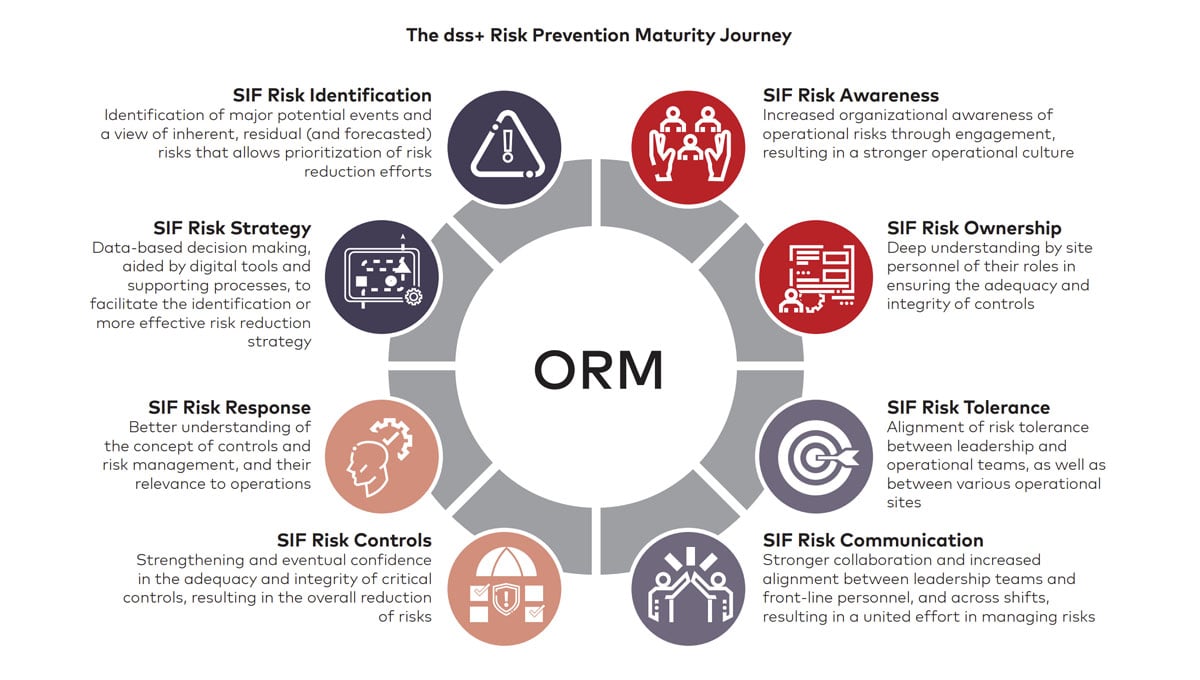
SIF is one aspect of Operational Risk that follows a similar risk prevention approach and journey. An effective and sustainable SIF prevention process is one that is built around the four critical ORM pillars, each one connected to the other
- Build an ‘on the ground’ SIF Risk Aware Culture
- Focus on SIF Risks identified by facts and evidence
- Develop practical SIF risk-reducing tools and processes
- Develop healthy management insights into SIF Risk Analysis
What does this SIF risk prevention journey look like in practical terms?
-
Build an ‘on the ground’ SIF Risk Aware Culture
Building a risk-aware culture is the very human side of ORM, and is comprised of several key initiatives.
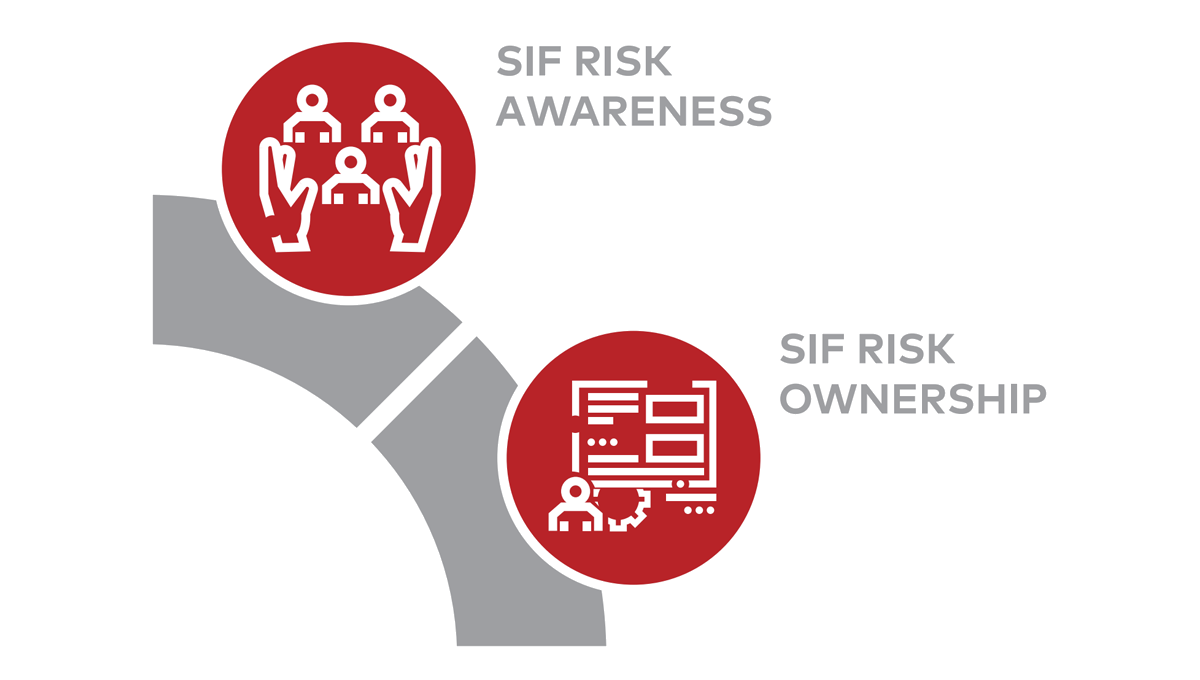
- Understanding the human behaviour system. Human performance in the workplace is greatly influenced by the organisational culture that surrounds them, the work environment they work in, and the systems they work with. As it relates to safety, people can be positively influenced by effective Behaviour-Based-Safety (BBS) processes, awareness of SIF risk recognition and tolerance, and training in “Go/No Go” SIF decision-making. Humans have a remarkable ability to compartmentalize SIF risk to enable daily functioning, and they must receive organizational assistance to open those compartment doors to openly examine the system and look for improvement opportunities. To release the true potential of their workers to act toward SIF prevention, organizational leaders must be interested in these subjects and be willing to learn and invest time in these subjects.
- Increasing sensitivity to SIF risks through engagement. The most effective way for leaders to learn about SIF risks in their operations, and at the same time raise awareness, is by engaging the workforce. By being present or ‘felt’ in the field, leaders can stimulate ongoing SIF discussions and take advantage of coachable moments. This will not only heighten risk awareness, but will also help leaders to better understand worker’s point of views. It will help leaders appreciate the challenges that workers face in the field so that processes and tools can be designed to be more effective. Leaders should also catalyse organic peer-to-peer engagements on SIF risks, allowing workers to tap into the collective experience of others past near-misses, for example, and foster the collective attitude of ‘I own this risk’
- Encouraging and supporting incident & near-hit reporting and exercising stop-work authority. Every level of management and leadership, and all peer work groups, must agree that reporting incidents and near-misses and using stop-work-authority are highly desirable behaviours that promote SIF prevention and exceptional teamwork. Sometimes these behaviours are the last line of defence for the prevention of an actual SIF outcome, especially when other systems have failed. Workers on-the-ground need to know that management encourages and supports these behaviours and that they will always be thanked for performing them.
- Modernizing definitions and approaches to zero tolerance and variance control. Leaders must define exactly what they mean by “zero tolerance” and how it would be applied in a fair and consistent manner. A modern definition of zero tolerance says ‘We have zero tolerance for allowing a SIF risk situation to be uncontrolled. This means we must stop a job whenever a critical SIF control is missing or underperforming.’ Control of variances is equally important. How easy is it for an individual or a crew to “grant themselves an exception” to following a lifesaving rule? In modern organizations, exceptions to lifesaving rules can only be authorized by the senior site executives (not supervisors or safety pros).
-
Focus on SIF Risks Identified by Facts and Evidence
Organizations should research and gather data from reports issued by reputable groups such as the U.S. Bureau of Labour Statistics, OSHA, NIOSH and WHO. Two SIF risks stand out by looking at the available facts and evidence
- Over-the-road motor vehicle accidents account for 24% of all work-related fatalities in the U.S.1 according
- Contractors account for nearly 20% of all work-related fatalities in the U.S. And each year the size of the hired contractor workforce in the U.S. continues to increase, with exception in 2020 due to the COVID-19 pandemic.2
- Organizational evidence shows that both of these SIF risks are systematically overlooked and avoided. It’s easy for management to assume that “someone else” is responsible for these problems. Another barrier is created by the intuitive awareness of the high volume of organizational resources necessary for proper management of these significant SIF risks. In either case, this is a huge problem. Organizational executives must make SIF risks of this nature a key element of their mission to protect lives. The SIF performance problem cannot be fixed without addressing these two critical risks
In practical terms, it boils down to recognizing that SIF performance problems exist in the industry sector and using the industry specific risks to set the tone for risk tolerance in each organization. This needs to be communicated in a way that builds collaboration – an alignment between the leadership and operational teams, supported by front-line personnel, that is resolute in their effort not to tolerate SIF potential.
Plenty of SIF risk management support is available that could be used to a greater extent. Numerous associations offer significant expertise and resources that could be better leveraged within organizations to address these SIF risks. For example:
Over-the-road MVI
- ANSI/ASSP Z15.1 Safe Practices for Motor Vehicle Operations provides guidance for a comprehensive management system for motor vehicle operations
- National Safety Council (NSC) Defensive Driving Safety Training
Contractor safety
- Associated General Contractors of America (AGC)
- American Contractors Insurance Group (ACIG)
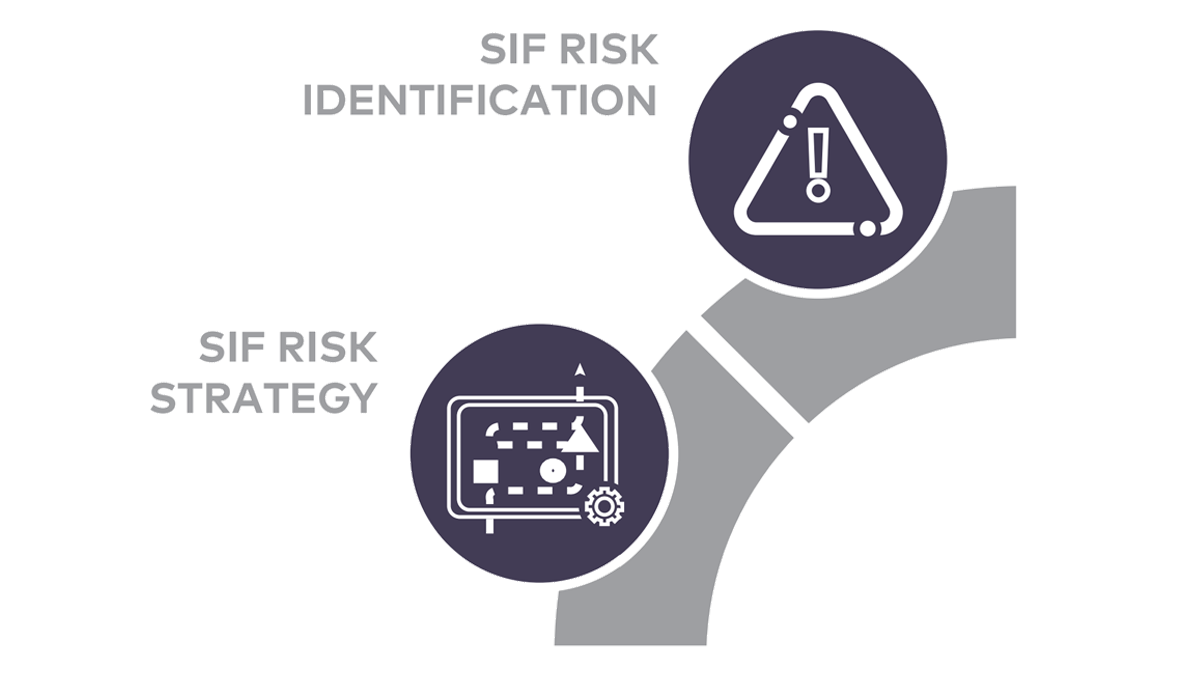
Communicate to Affect. How leaders communicate can have a huge impact on how the message is received. The evidence of SIF performance problems and exceptions in the industry may be clear, but focusing on numbers and compliance to requirements may drive a check-the-box attitude at best and under-reporting at worst. Communications need to be designed and delivered affectively, recognizing that it is the heart and mind of the workforce that we ultimately want to influence to ensure sustainable change.
-
Develop Practical SIF Risk Reducing Tools and Processes
The workforce needs the right tools to do their work safely and these tools must be supported by processes that encourage workers to complete every critical step, every time
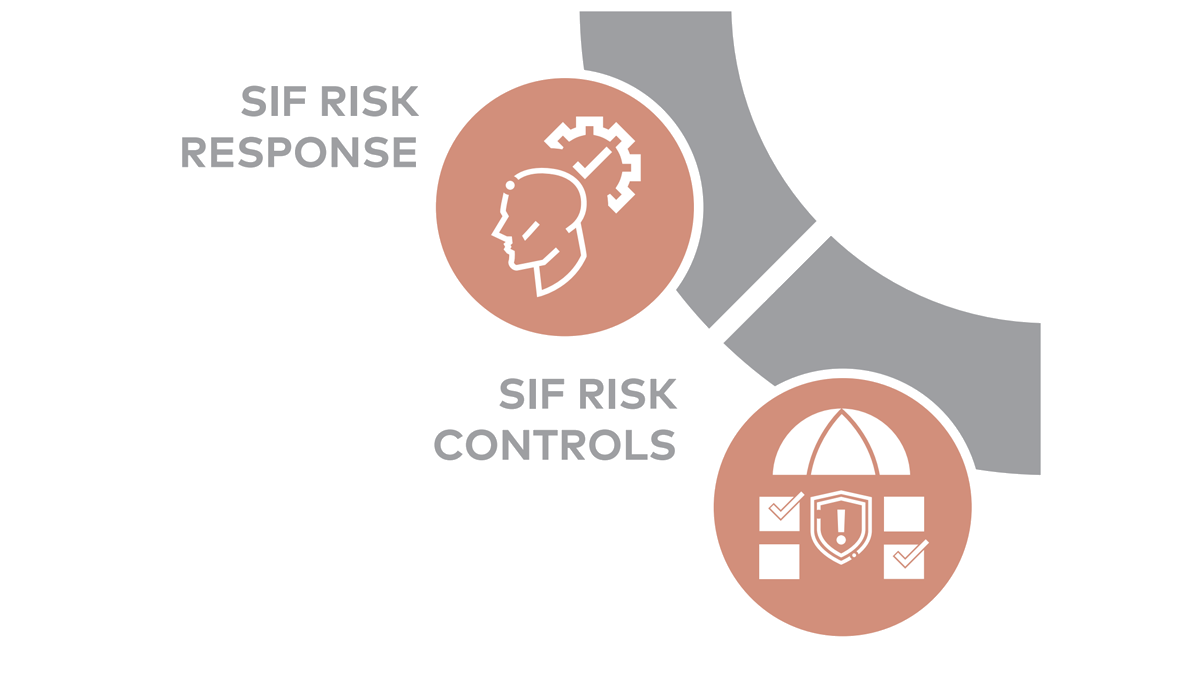
- Life-saving rules and processes. The rules must be clear and concise, written in affirmative, behaviourally-specific language. That is, they must describe what you expect the worker to do, rather than what you don’t want them to do. Programs and processes that support life-saving rules must be written in a manner that truly protects the on-the-ground worker from SIF harm, and fully enables every person touched by the program to perform their respective actions to comply.
- Effective pre-task risk assessments. At the start of a shift, before a job task begins, the crew must perform a safety briefing to identify the SIF risks and controls likely to be encountered in the job ahead. The briefing should be an interactive, collaborative conversation involving everyone. The conversation must accurately predict the SIF risks, identify the critical controls needed and assure that all critical controls are available to be implemented before authorizing work to begin. Best-in-class processes will also identify job changes and work environment changes that would trigger the use of stop-work-authority and will also include mid job verification checks and post-job after-action reviews
- On-the-ground validations of SIF Protection Controls. Each task containing SIF risk must have high-performing controls in place each time to fully protect the workers doing the work. Periodic on-the-ground performance validations must be conducted to confirm the presence and effectiveness of these critical controls. When critical SIF protections are missing or underperforming, the job must be stopped and the controls put in place before allowing the work to continue. The collection of information regarding underperforming controls is important for understanding deficiencies in the work planning and execution system.
-
Develop Healthy Management Insights into SIF Risk Analysis
Supporting continuous SIF risk reduction is all about investing in the collection of high-quality data, ensuring data integrity, and deriving meaningful information and accurate conclusions from a valid analysis.
When management conducts effective analyses, they will develop a sense of vulnerability about their SIF risk, which in turn will drive a more proactive approach to prevent SIF losses. Improved insights will also provide excellent advice for operational decisions across the value chain. Eventually, these systems will provide real-time data for in-the-moment decision-making, improving operational resilience around SIF prevention
Leaders are responsible for creating and sustaining a culture built around event reporting and analysis. This requires the investment of time and financial resources, as well as modelling of behaviours that support accurate interpretation of the data and intelligent reactions to the data analysis
Preventing recurrences of SIF incidents will ultimately boil down to several critical factors that leaders must regularly ask and address: What have we learned about our organization and our systems because of this event? To what extent do these conditions exist or persist in other parts of our organization? What trends are we seeing in critical controls breakdowns, diligence in pursuing higher level SIF controls (prevention through design), and percent of SIF jobs that are fully protected?
The SIF risk reduction strategy and execution plan needs to be regularly assessed for effectiveness based on the insights gathered. Organizations must feel comfortable making a change if desired outcomes are not realized. Performance indicators need to be reviewed thoughtfully and used as a guide for continuous improvement, remembering to respect failure and challenge accomplishments to prevent living in the illusion of high performance.
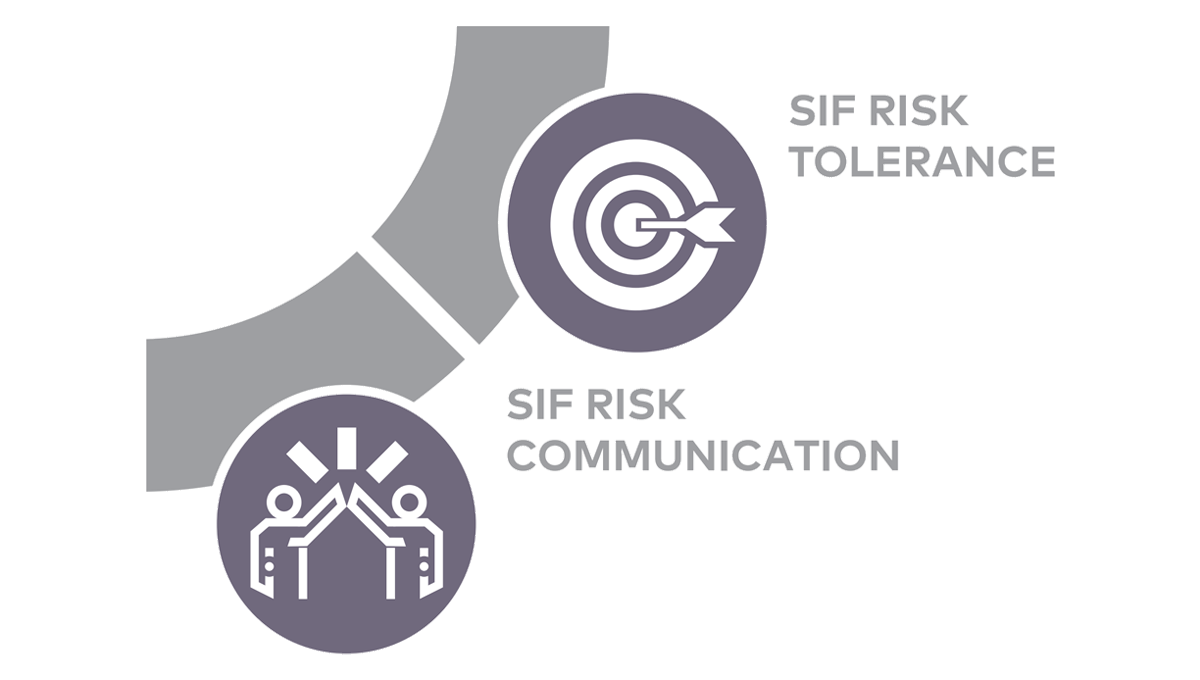
Conclusion
SIF practitioners, HSE professionals, and ORM experts around the world are collectively involved in the mission to solve the SIF problem. SIF control strategies are tightly aligned with how operational risks are managed. Applying ORM principles to solve the SIF problem and working under the sponsorship of operations executives, SIF colleagues can be assured of a more sustainable approach as they take their respective organizations on a SIF risk prevention journey to ultimately save lives and improve operations.
Be on the lookout for the third SIF paper in the series that addresses the question of why executive sponsorship, governance, and involvement are essential to the successful performance of any organizational SIF risk control initiative.